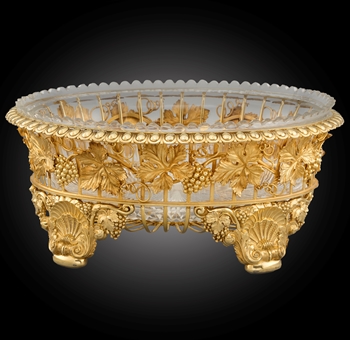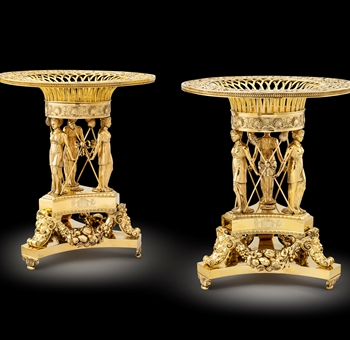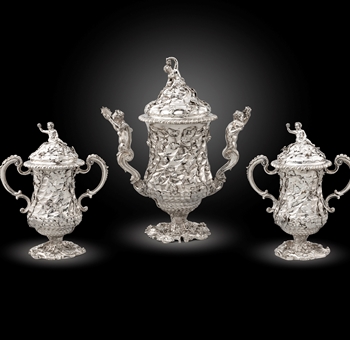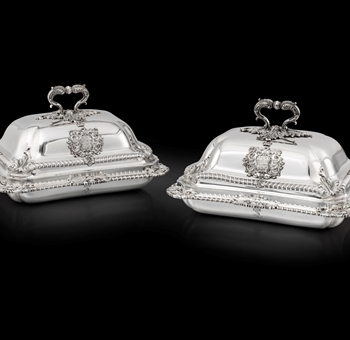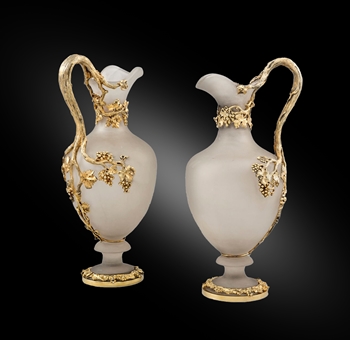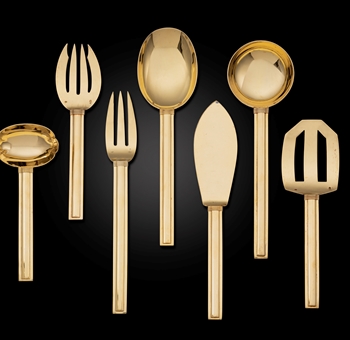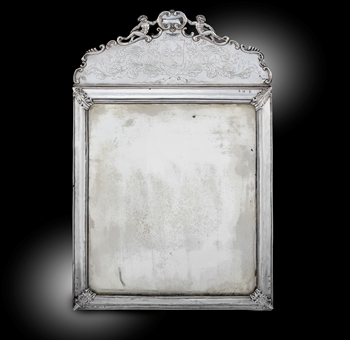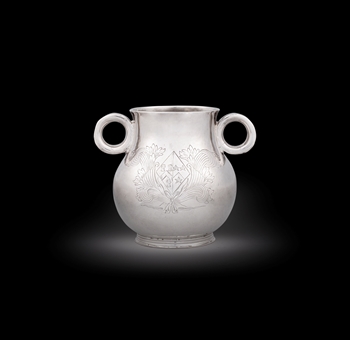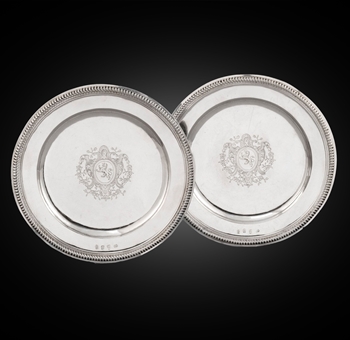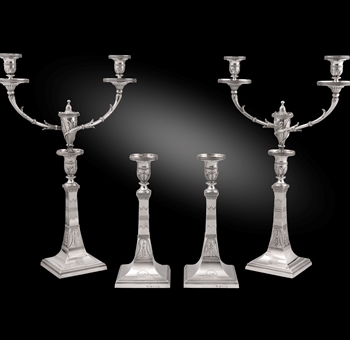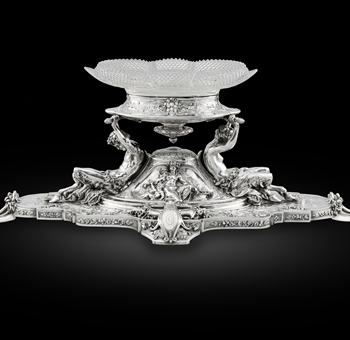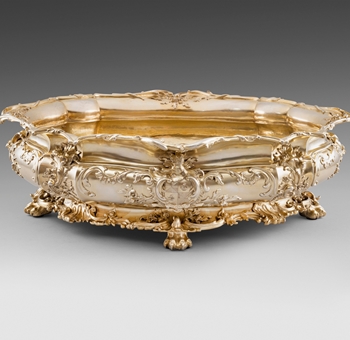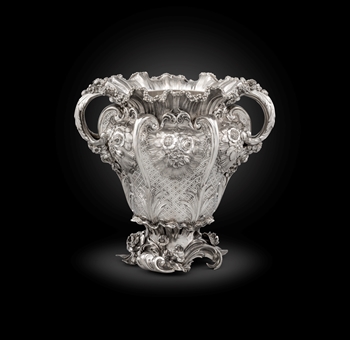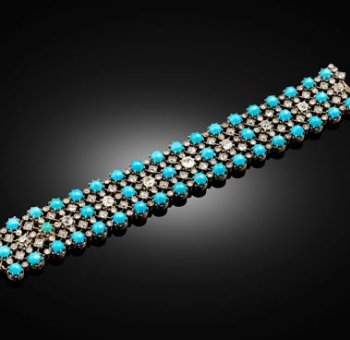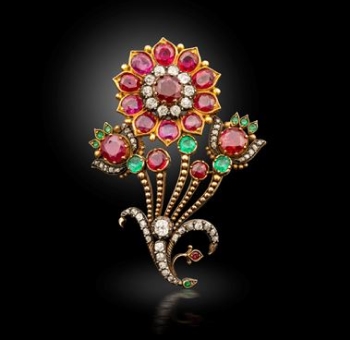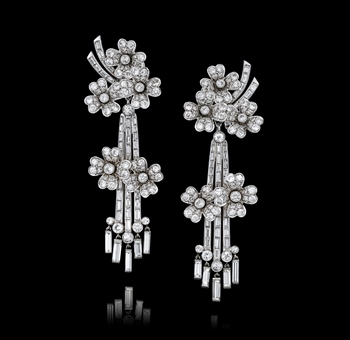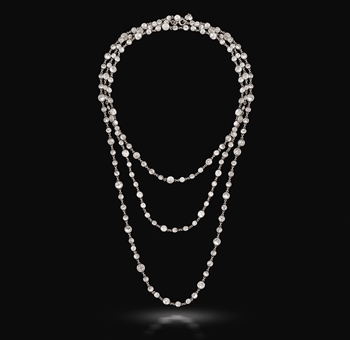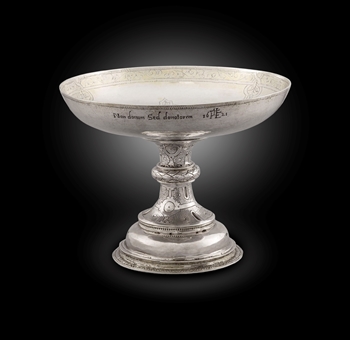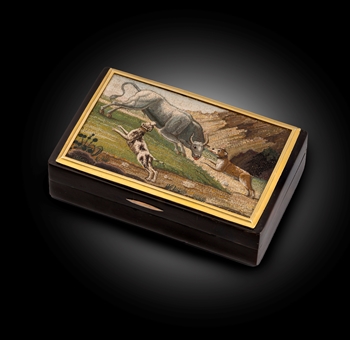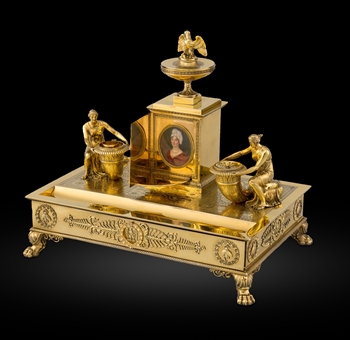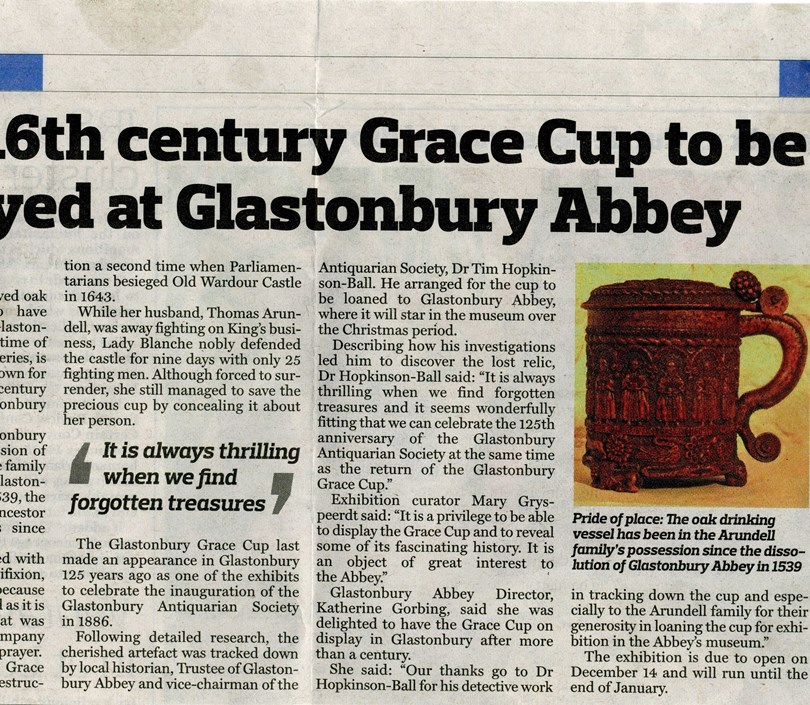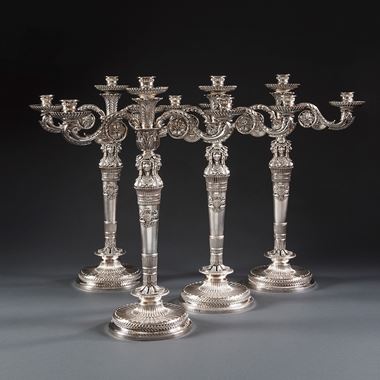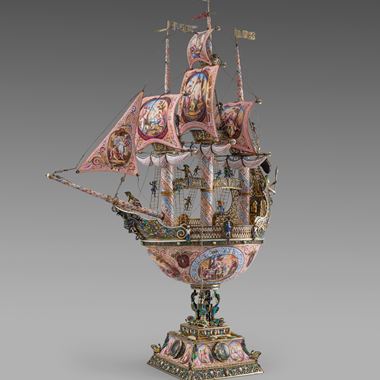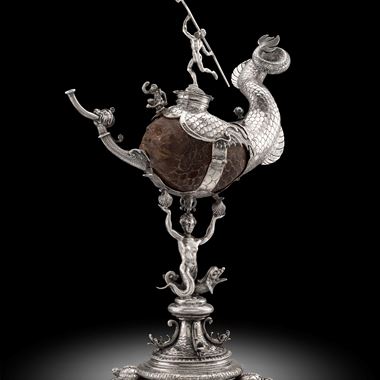Cylindrical and on three feet cast as lions, the sides cast from the 'Glastonbury Cup' with a band depicting the twelve apostles, each within a niche, above a label with their names and further band of birds and flowers, the hinged cover with a depiction of the Crucifixion and with a fruiting thumbpiece, with a scroll handle, the base engraved with a coat-of-arms with baron's coronet marked near rim and on cover.
James Everard, 10th Baron Arundell of Wardour (1785-1834) and presumably given to his half-brother
The Hon. Robert Arthur Arundell (1815-1876) and then by descent to his daughter
Mabile Mary (d.1942), who married Reginald Aloysius Talbot (1870-1922), and then by descent to their son
Reginald John Arthur Talbot (1900-1953), who changed his name by Royal License to Arundell in 1945, and then by descent to his son
Reginald John Richard Arundell (b.1931).
R. J. R. Arundell, Esq.; Christie's London, 12 March 1969, lot 30 (£1,950 to Kaye).
With Bulgari, Rome
Shirley Bury, et al. 'The Antiquarian Plate of George IV: a Gloss on E.A. Jones' The Burlington Magazine, June 1979, p. 348 and footnote.
This extraordinary tankard is a cast of the so called 'Glastonbury Cup' from the collection of Lord Arundell of Wardour Castle. The exact history of when the cup entered the Arundell family is unclear. It has traditionally been suggested to have been taken from Glastonbury Abbey, in Somerset, presumably when Glastonbury was stripped of it's valuables in September 1539, following the dissolution of the monasteries by Henry VIII, though the earliest record of it being with the family is during the English Civil war.
At that time it is noted that 'This peg tankard is one of the very few articles which were saved from Wardour castle, by Blanch, lady Arundell, who nobly defended that edifice against sir Edward Hungerford, and colonel Stode, in the absence of her husband, who had raised a regiment of horse, and joined Charles I., at Oxford. In one of the old inventories of the effects belonging to Wardour castle, this cup is mentioned as having been brought from the ancient abbey of Glastonbury, and was so much valued by the lady Arundell, that, upon surrendering the castle, she withdrew this cup, and certain articles of her property, and retiring to Winchester, retained it as long as she lived., (W. Hone, The Year Book of Daily Recreation and Information: Concerning Remarkable Men, Manners, Times, Seasons, Solemnities, Merry-makings, Antiquities & Novelties, Forming a Complete History of the Year; & a Perpetual Key to the Almanac, London, 1832, p. 241-242).
The 'Glastonbury Cup' became famous in the 18th century, when it was published in 'Observations on an Ancient Cup' in Archaelogia, vol. XI, 1794 and continued to grow in renown into the 19th century. Indeed by 1825 it was so well known that Thomas Dudley Fosbroke used it as the example to define the peg-tankard, describing them as:
'The peg-tankards... had in the inside a row of eight pins one above another from top to bottom; the tankards hold two quarts, so that there is a gill of ale, i.e. half a pint Winchester measure, between each pin. The first person that drank was to empty the tankard to the first peg, or pin; the second to the next pin, &c. by which means the pins were so many measures to the compotators, making them all drink alike, or the same quantity; and as the distance of the pins was such as to contain a large draught of liquor, the company would be very liable by this method to get drunk, especially when if they drank short of the pin or beyond it, they were obliged to drink again. (T. D. Fosbroke, Encyclopdia of Antiquities: And Elements of Archaeology, Classical and Medieval, London, 1825 p. 258-259).
He goes on to describe the 'Glastonbury Cup' specifically as 'A very fine specimen of these peg tankards, of undoubted Anglo-Saxon work, formerly belonging to the Abbey of Glastonbury is now in the possession of Lord Arundell of Wardour. It holds two quarts and formerly had eight pegs inside, dividing the liquor into half pints. On the lid is the Crucifixion, with the Virgin and John, one on each side of the cross. Round the cup are carved the twelve Apostles.' (op. cit., p. 259)
You May Also Like




